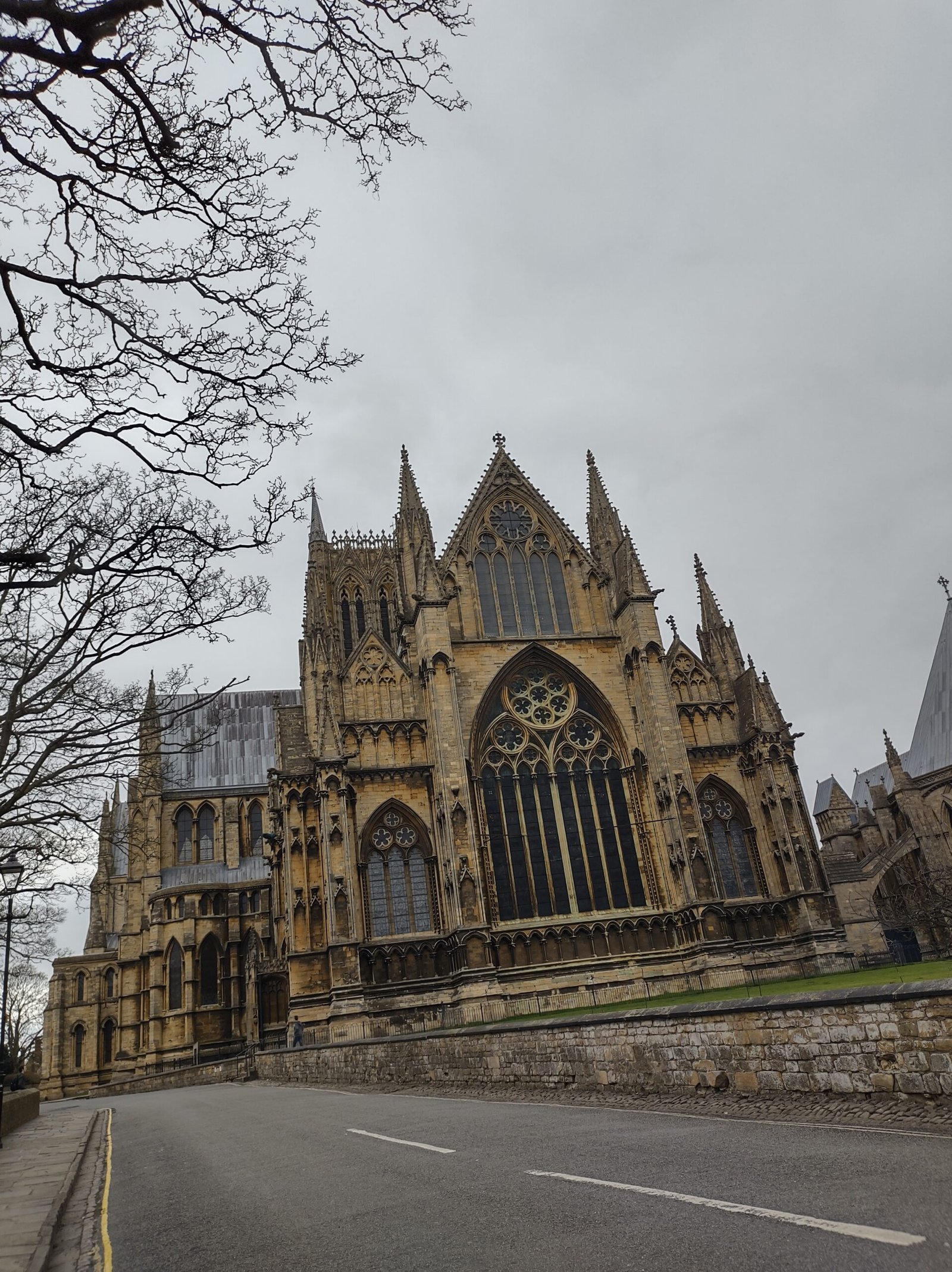
Discover The Lincoln Cathedral
Info Blog traxdigital.co.uk June 8, 2024
Lincoln Cathedral, a beacon of medieval architecture and ecclesiastical significance, stands majestically in the heart of Lincolnshire, England. This Gothic masterpiece, officially known as the Cathedral Church of the Blessed Virgin Mary of Lincoln, has been a site of worship, pilgrimage, and historical intrigue for nearly a millennium.
**Historical Background**
Construction of Lincoln Cathedral began in 1072 under the direction of Bishop Remigius de Fécamp, shortly after the Norman Conquest. The original structure was completed in 1092, but a devastating fire in 1141 necessitated extensive rebuilding. Subsequent generations of craftsmen and architects contributed to its evolution, resulting in the awe-inspiring edifice that dominates the skyline today.
**Architectural Highlights**
Lincoln Cathedral is renowned for its architectural innovation and grandeur. The west front, with its intricate carvings and statues, serves as a striking introduction to the cathedral’s splendor. The central nave, with its ribbed vaulting and soaring arches, exemplifies the Gothic style’s emphasis on height and light.
One of the most distinctive features is the Lincoln Imp, a small stone figure perched high in the Angel Choir. Legend has it that the imp was turned to stone by an angel as punishment for causing mischief. This whimsical detail highlights the blend of spirituality and storytelling woven into the fabric of the cathedral.
**The Stained Glass and Rose Windows**
The cathedral’s stained glass windows are masterpieces of medieval artistry. The Dean’s Eye and Bishop’s Eye windows, located in the transepts, are particularly noteworthy. The Dean’s Eye, dating back to the 13th century, depicts scenes of the Last Judgment, while the Bishop’s Eye showcases intricate geometric patterns and biblical stories.
**The Wren Library**
Named after Sir Christopher Wren, the Wren Library houses a remarkable collection of rare books and manuscripts. This library is a treasure trove for historians and scholars, providing insights into the religious, cultural, and intellectual life of medieval England.
**The Magna Carta**
Lincoln Cathedral is one of the select locations in the United Kingdom to possess an original copy of the Magna Carta, sealed by King John in 1215. This historic document, a cornerstone of constitutional law, is displayed in the adjacent Lincoln Castle, emphasizing the cathedral’s role in the broader tapestry of English history.
**Cultural and Spiritual Significance**
Beyond its architectural and historical importance, Lincoln Cathedral remains a living place of worship and community. Regular services, concerts, and events foster a vibrant spiritual and cultural life. The cathedral’s choristers, renowned for their musical excellence, contribute to the sacred atmosphere with their performances of choral music.
**Conclusion**
Lincoln Cathedral is more than just a building; it is a testament to the artistic, spiritual, and historical legacy of England. Its towering spires, intricate stonework, and storied past invite visitors to step back in time and experience the grandeur of medieval craftsmanship. As it continues to serve as a place of worship and cultural heritage, Lincoln Cathedral stands as a beacon of faith and history, inspiring awe and reverence in all who behold it.
COPYRIGHT traxdigital
